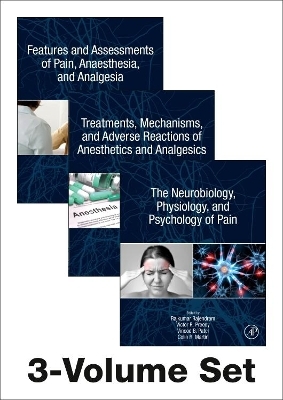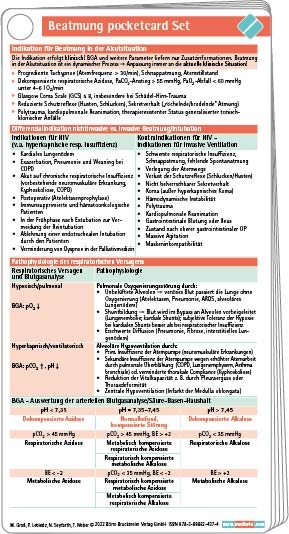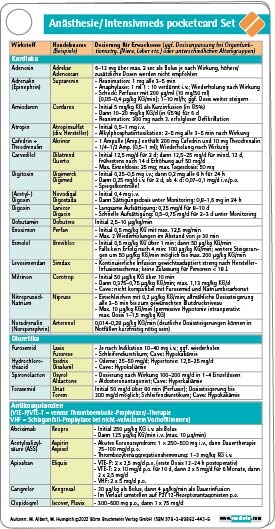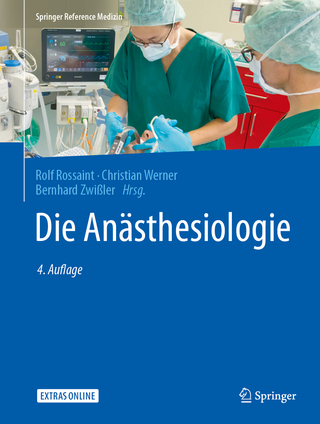
The Neuroscience of Pain, Anesthetics, and Analgesics
Academic Press Inc
978-0-12-821066-6 (ISBN)
The book works to clarify all of the subjects pertinent to anesthesia and the brain. Featuring chapters on neurotransmitters, pharmacology and brain imaging, this volume discusses the mechanisms of pain and experimental studies undertaken to better understand the pathways involved.
Dr Rajkumar Rajendram is a clinician scientist with a focus on internal medicine, anaesthesia, intensive care and peri-operative medicine. He graduated with distinctions from Guy’s, King’s and St. Thomas Medical School, King’s College London in 2001. As an undergraduate he was awarded several prizes, merits and distinctions in pre-clinical and clinical subjects. Dr Rajendram began his post-graduate medical training in general medicine and intensive care in Oxford. He attained membership of the Royal College of Physicians (MRCP) in 2004 and completed specialist training in acute and general medicine in Oxford in 2010. Dr Rajendram subsequently practiced as a Consultant in Acute General Medicine at the John Radcliffe Hospital, Oxford. Dr Rajendram also trained in anaesthesia and intensive care in London and was awarded a fellowship of the Royal College of Anaesthetists (FRCA) in 2009. He completed advanced training in regional anaesthesia and intensive care. He was awarded a fellowship of the Faculty of Intensive Care Medicine (FFICM) in 2013 and obtained the European diploma of intensive care medicine (EDIC) in 2014. He then moved to the Royal Free London Hospitals as a Consultant in Intensive Care, Anaesthesia and Peri-operative Medicine. He has been a fellow of the Royal College of Physicians of Edinburgh (FRCP Edin) and the Royal College of Physicians of London (FRCP Lond) since 2017 and 2019 respectively. He is currently a Consultant in Internal Medicine at King Abdulaziz Medical City, National Guard Heath Affairs, Riyadh, Saudi Arabia. Dr Rajendram’s focus on improving outcomes from Coronavirus Disease 2019 (COVID-19) has involved research on point of care ultrasound and phenotypes of COVID-19. Dr Rajendram also recognises that nutritional support is a fundamental aspect of medical care. This is particularly important for patients with COVID-19. As a clinician scientist he has therefore devoted significant time and effort into nutritional science research and education. He is an affiliated member of the Nutritional Sciences Research Division of King’s College London and has published over 400 textbook chapters, review articles, peer-reviewed papers and abstracts. Vinood B. Patel, BSc, PhD, FRSC, is currently Professor in Clinical Biochemistry at the University of Westminster. In 2014 Dr Patel was elected as a Fellow to The Royal Society of Chemistry. Dr Patel graduated from the University of Portsmouth with a degree in Pharmacology and completed his PhD in protein metabolism from King’s College London in 1997. His postdoctoral work was carried out at Wake Forest University Baptist Medical School, NC, USA studying structural-functional alterations to mitochondrial ribosomes, where he developed novel techniques to characterize their biophysical properties. Research is being undertaken to study the role of nutrients, antioxidants, phytochemicals, iron, alcohol and fatty acids in the pathophysiology of liver disease. Other areas of interest are identifying new biomarkers that can be used for the diagnosis and prognosis of disease and understanding mitochondrial oxidative stress in neurological disorders and iron dysregulation in diabetes. Dr Patel is a nationally and internationally recognized researcher and has several edited biomedical books related to the use or investigation of active agents or components. These books include The Handbook of Nutrition, Diet, and Epigenetics, Branched Chain Amino Acids in Clinical Nutrition, Cancer: Oxidative Stress and Dietary Antioxidants, Toxicology: Oxidative Stress and Dietary Antioxidants, Molecular Nutrition: Vitamins, The Neuroscience of Pain, Cognitive Behavioural Therapy. He is Editor of the ten-volume series Biomarkers in Disease: Methods, Discoveries and Applications. Victor R. Preedy BSc, PhD, DSc, FRSB, FRSPH, FRSC, FRCPath graduated with an Honours Degree in Biology and Physiology with Pharmacology. After gaining his University of London PhD, he received his Membership of the Royal College of Pathologists. He was later awarded his second doctorate (DSc), for his contribution to protein metabolism in health and disease. He is Professor of Clinical Biochemistry (Hon) at King’s College Hospital and Emeritus Professor of Nutritional Biochemistry at King’s College London. He has Honorary Professorships at the University of Hull, and the University of Suffolk. Professor Preedy was the Founding Director and then long-term Director of the Genomics Centre at King’s College London from 2006 to 2020. Professor Preedy has been awarded fellowships of the Royal Society of Biology, the Royal College of Pathologists, the Royal Society for the Promotion of Health, the Royal Institute of Public Health, the Royal Society for Public Health, the Royal Society of Chemistry and the Royal Society of Medicine. He carried out research when attached to the National Heart Hospital (part of Imperial College London), The School of Pharmacy (now part of University College London) and the MRC Centre at Northwick Park Hospital. He has collaborated with international research groups in Finland, Japan, Australia, USA, and Germany. To his credit, Professor Preedy has published over 750 articles, which includes peer-reviewed manuscripts based on original research, abstracts and symposium presentations, reviews and edited books.
Features and Assessments of Pain, Anaesthesia and Analgesia:
I. Setting the scene: General aspects of anesthesia, analgesics and pain1. The concept of multimorphic cancer pain: a new approach from diagnosis to treatment; 2. Recent advances in the linkage of attachment and pain: a new review; 3. The management of pain in older peopleFelicity; 4. Anesthesia and body mass: epidural depth and beyond; 5. Anesthetics and analgesic activities of herbal medicine: Review of the possible mechanism of action; 6. Analgesia-first sedation and multimodal analgesia in the intensive care unit; 7. The multidisciplinary Acute Pain Service: features and experiences; 8. Monitoring anaesthesia: EEG and beyhond
II. The syndromes of pain9. Cluster headache and pain: features and treatments; 10. Migraine and pain: features and treatments; 11. Complex regional pain syndrome; 12. Phantom limb pain; 13. Painful diabetic neuropathy: The roles of microglia; 14. Maternal deprivation and nociceptiionIraci; 15. Giving birth and pain; 16. Abdominal Pain in Gastroparesi; 17. Appendicitis and related abdominal pain; 18. Ovarian hormones, site-specific nociception and hypertension; 19. Linking the heart and pain: physiological and psychophysiological mechanisms; 20. Chronic pain in military veterans; 21. Nociception during surgery; 22. Breast cancer and nociception; 23. Postoperative pain after rhinoplasty and rhinologic surgery; 24. Pain response, neonates and venipuncture; 25. Carpal tunnel syndrome and pain; 26. Pain and HIV; 27. Pain mechanisms in computer and smartphone users
III. Interlinking anesthesia, analgesics and pain 28. Patients' and health professionals' positions regarding the use of analgesics in cancer cases; 29. Linking compression of myofascial trigger points and musculoskeletal pain; 30. Multimodal analgesia and post-surgical pain; 31. Pain, ultrasound-guided Pecs II block and general anesthesia; 32. Pain control during prostate biopsy and evolution of local anesthesia techniqes; 33. Pain reduction, in cosmetic injections: fillers and beyond; 34. Anesthesia and combat-related extremity injury; 35. Spinal anesthesia: applications to cesarean section and pain; 36. Postoperative Pain Management: Truncal blocks in thoracic surgery; 37. Postoperative Pain Management: Truncal blocks in general surgery; 38. Linking analgesia, epidural oxycodone, pain and laparoscopy; 39. Levobupivacaine features and linking in infiltrating analgesia
IV. Assessments, screening and resources40. The Pain Catastrophizing Scale: Features and Applications; 41. The Pain Behaviour Scale (PaBS); 42. The analgesia nociception index: features and application; 43. Back Pain Evaluation Questionnaire; 44. The Back Pain Functional Scale: features and applications; 45. Cognitive impairment, pain and analgesia; 46. Biomarkers in endometriosis-associated pain; 47. Biomarkers in bladder pain syndrome: a new narrative; 48. Biomarkers of statin-induced musculoskeletal pain: Vitamin D and beyond; 49. Performance-based and self-reported physical fitness as a powerful marker of musculoskeletal pain
Treatments, Mechanisms, and Adverse Reactions of Anesthetics and Analgesics:
I. Drugs and agents used in anesthesia and analgesia1. Anesthesia for malignant hyperthermia susceptible patients; 2. Use of dextran in regional anesthesia; 3. Intraperitoneal local anesthetic agents in the management of post-operative pain; 4. Automatic control of anesthesia via different vital signs; 5. Non-opioid based analgesia in otolaryngology
II. Mechanisms of action of drugs6. Buprenorphine: mechanisms and applications; 7. Caffeine usage in pain management; 8. Chloroprocaine: features and applications; 9. Clonidine: features and applications; 10. An excursion into secondary pharmacology of fentanyls with potential implications for drug design: σ1 receptor; 11. Isoflurane: mechanisms and applications; 12. The lidocaine patch: features and applications: post-thoracotomy pain and beyond; 13. Memantine: features and application to chronic pain control; 14. Midazolam: Perioperative administration; 15. Intravenous paracetamol: features and applications; 16. Prilocaine: mechanisms and applications; 17. Sevoflurane: features and use in topical application for wound care; 18. Tramadol as an analgesic
III. Adverse effects, reactions and outcomes19. Long-term effects of anaesthesia on the brain: an update on neurotoxicity; 20. Neuraxial labour analgesia and breast feeding; 21. Mechanistic Overview of How Opioid Analgesics Promote Constipation; 22. Cognitive-behavioral therapy for opioid use disorder and chronic pain; 23. Preoperative opioid and benzodiazepines: impact on adverse outcomes; 24. Anesthetics, Malignant hyperthermia syndrome and Kv7 channels; 25. Problems with epidural catheter; 26. Headache after neuroaxial blocks: a focus on combined-epidural anesthesia; 27. Liposomal bupivacaine, pain relief and adverse events; 28. Adverse events associate with analgesics: a focus on paracetamol use
IV. Novel and non-pharmacological aspects and treatments29. Acronychia pedunculata leaves and usage in pain; 30. Adansonia digitata and use in neuropathic pain: prostaglandins and beyond; 31. Andrographis paniculata standardized extract (ParActin) and pain; 32. Capsaicin: features usage in diabetic neuropathic pain; 33. Cola nitida and Pain reliefLawrence; 34. Analgesic effects of Ephedra Herb extract and ephedrine alkaloids-free Ephedra Herb extract (EFE); 35. Euphorbia bicolor (Euphorbiaceae) Latex Phytochemicals and applications to analgesia; 36. Pain relieving activity of muntingia calabura l.: elucidation of possible mechanisms of action and identification of responsible phytoconstituents; 37. Resolving neuroinflammation and pain with Maresin 1, a specialized pro-resolving lipid mediator; 38. Therapeutic role of naringenin to alleviate inflammatory pain; 39. Analgesic properties of Solanum paniculatum and S.torvum extracts; 40. Dietary constituents contribute to local anesthetic agent: neurophysiologicals mechanism of nociceptive pain; 41. Pain response following prenatal stress and its modulation by antioxidants; 42. Physical activity and fitness in the prevention of musculoskeletal pain in youth; 43. Linking aerobic exercise and childhood pain alleviation: a narrative; 44. Physical activity and exercise in the management of musculoskeletal pain: a focus on fibromyalgia; 45. Spinal cord stimulation and limb pain; 46. Effectiveness of neural mobilization on pain and disability in individuals with musculoskeletal disorders; 47. Virtual reality and applications to treating neck pain; 48. Virtual reality-induced analgesia and dental pain; 49. Vibrotactile devices, DentalVibe and local anesthesiaElitsa; 50. Cooled radiofrequency ablation (CRFA) and osteoarthritis treatment for pain; 51. Non-pharmacologic analgesic therapies: a focus on photobiomodulation, acustimulation and cryoanalgesia (ice) therapy; 52. New coping strategies and self-education for chronic pain management: e-health; 53. Postoperative Pain Management Truncal blocks in obstetric and gynecologic surgery
The Neurobiology, Physiology and Psychology of Pain
I. Molecular and cellular aspects1. Gene expression, KCNQ/Kv7 channels and neuropathic pain; 2. The NTRK1 gene and congenital insensitivity to pain; 3. Prdm12, a key transcriptional regulator of the nociceptive lineage; 4. Linking the genetics of fibromyalgia and painFernando; 5. Fentanyl: Polymorphisms, and adverse events; 6. Propofol anesthesia and molecular changes in the brain; 7. Protein Kinase G is a Molecular Switch for Pain; 8. Adrenergic agonists and the mu opioid receptor; 9. Inflammatory and neuropathic pain impact on the opioid function in the mesocorticolimbic systemL; 10. Clinacanthus nutans, analgesia and the l-arginine/nitric oxide-mediated/cyclic-guanosine monophosphate-independent pathway; 11. alpha2/3-selective GABAA receptor PAMs as pain medications; 12. alpha5GABAA receptors and their role in pain perception; 13. ATP sensitive potassium channels in pain and analgesia; 14. Astrocyte-neuron lactate shuttle and pain; 15. Nociception and sweet solutions: applications to inflammatory pain; 16. Interlinking Interleukin-33 (IL-33), neuroinflammation and neuropathic pain; 17. Neurons of the parabrachial nucleus, nociceptive input and pain pathways; 18. Anterior cingulate cortex, pain perception and pathological neuronal plasticity during chronic pain; 19. Sleep deprivation headaches and Fos immunohistochemistry; 20. Antinociceptive glucagon-like peptides; 21. Pain transmission and peripheral group III metabotropic glutamate receptors (mGluRs); 22. TRPM -8 receptor and menthol in pain management
II. Physiology, imaging and physical recordings 23. Anesthetic and proconvulsant effects of ketamine on EEG; 24. Electroencephalography and anesthetic doses of ketamine; 25. Linking heart function and analgesia; 26. Computed Tomography-guided procedures for epidural injections; 27. Chronic pain: Linking deep brain stimulation and sensory functional MRI; 28. Neurocognition and placebo analgesia: linking in functional magnetic resonance imaging; 29. Linking the cortex, functional spectroscopy and pain: features and applications; 30. Muscle origins of myofascial pain syndrome
III. Psychology and Behaviour31. Behavioral markers of pain; 32. Adverse life events, sensitization of spinal nociception, and chronic pain risk; 33. Cognitive-affective modulation of pain: The Placebo and nocebo phenomena and their impact on pain treatment; 34. Nociception-related behavioral phenotypes in adult zebrafish; 35. Pain, implantable pain devices and psychosocial aspects as a narrative; 36. Influence of psychological factors in myofascial pain
IV. Resources37. Resources
| Erscheint lt. Verlag | 12.6.2024 |
|---|---|
| Verlagsort | San Diego |
| Sprache | englisch |
| Maße | 216 x 276 mm |
| Gewicht | 4600 g |
| Themenwelt | Medizin / Pharmazie ► Medizinische Fachgebiete ► Anästhesie |
| Naturwissenschaften ► Biologie ► Humanbiologie | |
| Naturwissenschaften ► Biologie ► Zoologie | |
| ISBN-10 | 0-12-821066-4 / 0128210664 |
| ISBN-13 | 978-0-12-821066-6 / 9780128210666 |
| Zustand | Neuware |
| Informationen gemäß Produktsicherheitsverordnung (GPSR) | |
| Haben Sie eine Frage zum Produkt? |
aus dem Bereich


